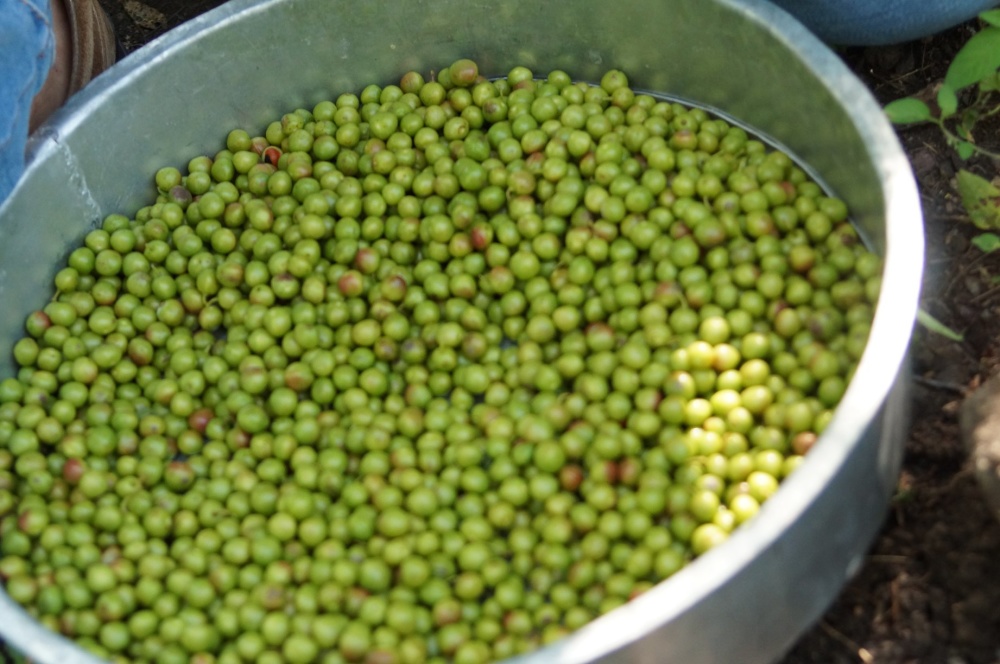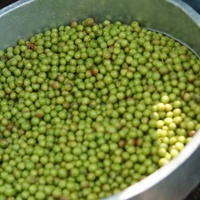Common name: Linaloe tree
Other common names: Copal lemon, Elemi gum, Indian lavender
Description
Linaloe is an essential oil yielding tree originating in South-West Mexico, in Guerrero, Morelos, Oaxaca and Puebla. Long ago introduced into India, it is cultivated there for its essential oil, mainly around Bangalore.
It is a small tree, typically 5 to 7 m (16 to 23 ft) tall, with wide-spreading horizontal branches coming off a short trunk, forming a much-branched rounded crown. The bark is grey and smooth, and the stems soft-wooded and succulent, with the ability to store water, enabling the tree to survive a long dry season.
The leaves are up to 20 cm (8 in) long and made up of six to fourteen leaflets arranged in pairs along the length and with an extra leaflet at the tip. Individual leaflets are oval with a pointed tip, 4 to 8 cm (1.6 to 3.1 in) long, dull blue-green, deeply toothed on the margins and give off a sweet aroma when crushed. They fall from the tree in the dry season, leaving the branches bare and exposed until the rainy season, when the new leaves emerge.
At the transition from the dry to the rainy season, small green-white flowers bloom in loose clusters on the newly leafed branches and with female and male flowers on separate trees. The fertilised female flowers develop into small, green, egg-shaped fruit, becoming red or red-brown when ripe then fall to the ground.

Fruit, Puebla, Mexico (Source)
Use
The wood and mature fruit yield on steam distillation, a colourless or pale yellow essential oil traded respectively as 'Linaloe wood oil' and 'Linaloe berry oil', with similar composition and an agreeable balsamic, slightly rose-like aroma. Both are used to scent perfumes, soaps, lotions and cosmetics, and flavour foods such as baked goods, chilled dairy desserts, and beverages (alcoholic and non-alcoholic). The berry oil is considered superior to the wood oil, possessing a longer-lasting aroma.
Linaloe oil was an important source of 'Linalol' used in perfumes and valued for its spicy-floral honeysuckle and lilac notes. Unfortunately, Linalol is now cheaply synthesised but may one day return to its past prominence if the call for natural ingredients continues growing stronger.
In Mexico, the oil is distilled from the wood of wild trees at least twenty years old, with the best oil coming from much older trees. In contrast, in India, the oil is distilled only from the husk of mature fruit, leaving the tree unharmed.
In India, the mature fruit are hand-picked from the tree or collected after falling to the ground. They are then shade-dried and de-husked, with production roughly at 250 kilograms of dried husks per hectare. With an average oil content of 10%, the yield is about 25 kilograms of oil on distillation, the equivalent of 22 pounds of oil to the acre.
Climate
Grows naturally in sub-humid subtropical and tropical climates, generally areas with annual lows of 12 to 21°C, annual highs of 27 to 35°C, annual rainfall of 500 to 1200 mm and a dry season of 5 to 7 months.
Growing
New plants are usually started from cuttings and using air-layering (circumposing) techniques because the seed have a low germination rate. Also, plants produced vegetatively start to fruit much earlier than seedlings do.
It performs best on free-draining loam, sand-loam, loamy-sand and gravelly or limestone soils of a slightly acid to alkaline nature, generally with a pH of 6.5 to 8.5, and on sites with full sun exposure.
Problem features
Its poor seed germination rate is unlikely to make it emerge as a problem weed or invasive species. There does not appear to be any records of its escape or naturalisation, despite its cultivation outside its native range.
Where it grows
References
Books
-
Brady, G. S. & Clauser, H. R & Vaccari, J. A. 2002, Materials handbook : an encyclopedia for managers, technical professionals, purchasing and production managers, technicians and supervisors, 15th ed., McGraw-Hill, New York
-
Burdock, G.A. 2010, Fenaroli's Handbook of Flavor Ingredients, 6th ed, CRC Press: Boca Raton, Florida
-
Farooqi, A. A. & Sreeramu, B. S. 2004, Cultivation of medicinal and aromatic crops, Hyderabad University Press, Hyderabad
-
Groom, N. 1997, The new perfume handbook, 2nd ed., Blackie Academic & Professional, London
-
Guenther, E. & Althausen, D. 1948 to 1952, The essential oils (6 volumes), Van Nostrand Publishing, New York
-
Hill, A. F. 1952, Economic botany : a textbook of useful plants and plant products, 2nd ed, McGraw-Hill, New York
-
Luna, R. K 1996, Plantation trees, International Book Distributors, Dehradun, Uttarakhand
-
Macmillan, H. F. 1943, Tropical planting and gardening : with special reference to Ceylon, 5th ed, Macmillan Publishing, London
-
Prasanna, P.V. 2012, Trees of Hyderabad: A Pictorial Guide, 1st ed., Botanical Survey of India (BSI), Indian Government Ministry of Environment and Forests, Kolkata
-
Record, S. J. & Hess, R. W., 1972, Timbers of the New World, Yale University Press, New Haven, Connecticut & Arno Press, New York
-
Standley, P. C. 1920, Trees and shrubs of Mexico, Government Printing Office (GPO), Washington D.C.
Articles, Journals, Reports and Working Papers
-
Borchert, R. & Meyer, S.A. & Felger R.S. & Porter-Bolland L. 2004, Environmental control of flowering periodicity in Costa Rican and Mexican tropical dry forests, Global Ecol. Biolgeogr. 13: 409-425
-
Borchert, R., & Rivera, G. 2001, Photoperiodic control of seasonal development and dormancy in tropical stem-succulent trees, Tree Physiology 21.4 (2001): 213-221.


